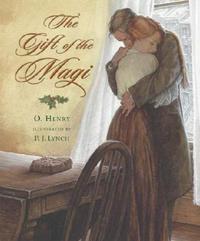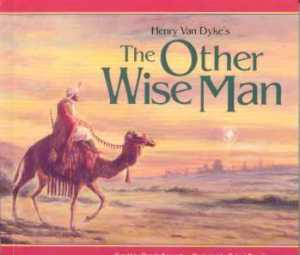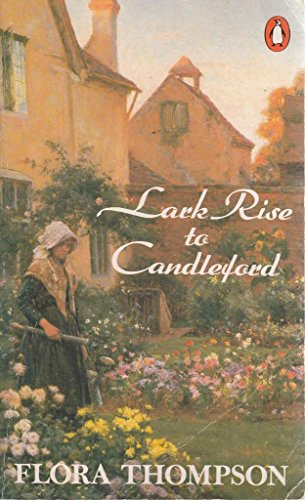
I invite you to enjoy this guest post by my dear friend and college roommate, Wendy Robinson of Virginia:
Lark Rise to Candleford is part memoir, part history, and a lovely tale of growing up in the English countryside. The volume contains three books: Lark Rise, Over to Candleford, and Candleford Green.
The story celebrates all the tiny details of nature, first through a child’s eyes and later through those of a young woman. The author, Flora Thompson, relished and observed all the little things in the hedgerows, and in the woods, and in village life before the turn of the century. She understood this village life on an intimate level, both the harshness of poverty, having lived alongside it, and the beauty of its industrious, self-sufficient inhabitants, and she wrote beautiful descriptions of the surrounding landscapes and farms that tie the book together like a thread.
It begins in a hamlet called Lark Rise where a young girl named Laura lives with her brother in the ‘end house’:
“Looking at the hamlet from a distance, one house would have been seen, a little apart, and turning its back on its neighbors, as though about to run away into the fields. It was a small grey stone cottage, with a thatched roof, a green-painted door and a plum tree trained up the wall to the eaves.”
Laura’s world moves from this isolated hamlet to the larger town of Candleford and eventually to a village called Candleford Green as we see her become a young woman through the three stories.
This was a time when men worked on the land, sang at their work and, for the most part, enjoyed their labor:
“There was a good deal of outdoor singing in those days. Workmen sang at their jobs; men with horses and carts sang on the road … even the doctor and parson hummed a tune between their teeth. People were poorer and had not the comforts, amusements, or knowledge we have to-day; but they were happier. Which seems to suggest that happiness depends more upon the state of mind — and body, perhaps — than upon circumstances and events.”
For modern day readers it is a beautiful picture of life right on the edge of the Industrial Revolution. On this side of it, we see all that we have lost. For an older reader like myself it is to be reminded of my own grandmother’s stories from her childhood only a few decades removed from Laura’s. I was surprised to see that many of the songs and games the children played were the same ones Grandma taught us. She also told similar tales of the wild outdoor freedom and responsibilities (and dangers) that children enjoyed – and today’s children may never know. I was blessed to grow up in a small semi-rural town where it was safe to explore the woods and meadows, and I love this book because it took me back to those memories. In these living history essays, you may even be able to trace shades of the old ways through your own family’s story.

George Vicat Cole “A Surrey Countryside”
The book brims with the domestic details of everyday life and vivid descriptions of the hamlet homes:
“Old Sally’s was a long, low, thatched cottage with diamond-paned windows winking under the eaves and a rustic porch smothered in honeysuckle.” Her kitchen: “…with pots & pans and a big red crockery water vessel at one end, and potatoes in sacks and peas and beans spread out to dry at the other. The apple crop was stored on racks suspended beneath the ceiling and bunches of herbs dangled below”
“Inside Freddy Ashley’s home all was peace and quiet and spotless purity. The walls were freshly whitewashed, the table and board floor were scrubbed to a pale straw colour… Freddy was helping his mother make biscuits, cutting the pastry she had rolled into shapes with a little tin cutter. Their two faces, both so plain and yet so pleasant, were close together above the pasteboard, and their two voices as they bade Laura come in and sit by the fire sounded like angels’ voices after the tumult outside. It was a brief glimpse into a different world from the one she was accustomed to, but the picture remained with her as something quiet and pure and lovely. She thought that the home at Nazareth must have been something like Freddy’s.”
The author’s descriptions of their vegetable and flower gardens are also charming and poignant:
“The garden was a large one … Nearer the cottage were fruit trees, then the yew hedge, close and solid as a wall, which sheltered the beehives and enclosed the flower garden, Sally had such flowers and all of them sweet-scented! It seemed as though all the roses in Lark Rise had gathered together in that one garden.”
“As well as their flower garden, the women cultivated a herb corner, stocked with thyme and parsley, and sage for cooking, rosemary to flavor the home-made lard, lavender to scent the best clothes…”
While the first book, Lark Rise, is full of images of everyday life, the second book, Over to Candleford, depicts how Laura’s world opens up when she begins to spend her summer holidays with her cousins in a neighboring town, eight miles away. The final book, Candleford Green, sees Laura off to her new life as an assistant in a village Post Office.

first published in 1939
But Laura never loses her love for her humble upbringing or her heart for nature; she moves out into the world with youthful hope, never forgetting what it was to have her shoes ‘powdered yellow with buttercup pollen’, to see the copses full of bluebells and the water-meadows with cowslips or the warm-hearted faces of the people she knew. She carries the picture with her and is able to call up at will the beauty maybe only she recognized there.
Read it slowly, outside in the warm sunshine, where you can hear the wind in the trees and you may be able to catch a glimpse of it, too.

Flora Thompson 1876-1947
“ Flora Thompson’s Lark Rise to Candleford is a much-loved classic that has been read in various ways. For some it is an artless childhood memoir set in an Oxfordshire village in the 1880s. For others it is a lament for England’s peasantry, destroyed by mechanisation and modern farming. Richard Mabey’s expert, exploratory book sees it, rather, as a sophisticated work of fiction, part-fact, part-imagined, that was the crowning achievement of a self-taught working-class woman who transformed herself, by sheer determination, into a successful author. (“Dreams of the Good Life: The Life of Flora Thompson and the Creation of Lark Rise to Candleford by Richard Maybe”, review by John Carey, The Sunday Times, London, UK, February 23, 2014)



 The trio’s impossible mission is to locate the missing Prince, heir to the throne of Narnia and son of the aged King Caspian. But Rilian disappeared without a trace over ten years earlier and their quest is fraught with mystery and both subtle and horrifying dangers.
The trio’s impossible mission is to locate the missing Prince, heir to the throne of Narnia and son of the aged King Caspian. But Rilian disappeared without a trace over ten years earlier and their quest is fraught with mystery and both subtle and horrifying dangers.
 Are you ready to enter the naval world of the Napoleonic Wars between England and France? Sea battles, duels of honor, consummate seamanship, and heroic deeds leap from the pages of C.S. Forester’s Horatio Hornblower saga.
Are you ready to enter the naval world of the Napoleonic Wars between England and France? Sea battles, duels of honor, consummate seamanship, and heroic deeds leap from the pages of C.S. Forester’s Horatio Hornblower saga.































